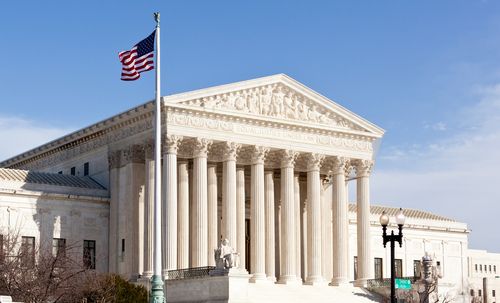 Lately, the eyes of the world have been on the United States Supreme Court. When the Court ruled that marriage equality was the law of the land in 2015, it seemed to signal a new era in American politics. In the fight for human rights, it seemed there was nowhere left to go but forward.
Lately, the eyes of the world have been on the United States Supreme Court. When the Court ruled that marriage equality was the law of the land in 2015, it seemed to signal a new era in American politics. In the fight for human rights, it seemed there was nowhere left to go but forward.
When conservative Justice Antonin Scalia unexpectedly passed in February of 2016, that feeling quickly began to dissipate. In just a few years, the narrow liberal majority on the Supreme Court morphed into a conservative supermajority. The Trump administration was able to secure the confirmation of three Justices during its time in power. Seemingly overnight, much of the optimism that followed Obergefell v. Hodges dissipated.
Fears on Reversing Marriage Equality
Historically, marriage equality and reproductive rights have been highly controversial issues in American politics. So when the Supreme Court began signaling that the landmark decision of Roe v. Wade could be in its crosshairs, concerns about the security of Obergefell v. Hodges naturally followed. While there have yet to be any direct challenges to the 2015 decision, New Jersey and West Virginia began moving to protect the right to marry in their state constitutions. Legislation of this kind would guarantee the right for all couples to marry regardless of how the Court behaves in the future.
Interestingly enough, the makeup of the Supreme Court is now set to change once again. Generally associated with the Court's liberal wing, Justice Stephen Breyer recently announced his decision to retire from the bench. This development will give the Biden administration its first shot at confirming a nominee to the highest court in the land.
New Face, New Court
Appointed during the Clinton administration, Stephen Breyer served as a justice for nearly 30 years. As the senior liberal justice on the court, he will be remembered as one of the voices who made marriage equality in the United States a reality. With his retirement, there is now a question on what his successor will mean for the Court going forward.
The late Justice Byron White once said, "Every time a new justice comes to the Supreme Court, it's a different court." It is important to note that Breyer's successor will not change the numerical makeup of the court. However, a new perspective could drastically influence the way the court rules going forward. Whoever emerges as Breyer's successor will have the opportunity to argue, advocate and persuade on the matters that come across the bench. There is a question of how this successor will impact the perspectives of the more moderate members of the Court's conservative wing.
At this point, it is safe to assume that whoever the Biden administration nominates is likely to be a supporter of protecting marriage equality. Still, the Biden administration's nominee will need to be confirmed by Congress before he or she is appointed to the court. The potential pressure from political opponents will impact Biden's decision on who to nominate. Additionally, the successor's likelihood of being confirmed by Congress will also be subject to outside political pressure.
Progress Is Not Always Linear
In American politics, the Supreme Court has a disproportionate impact on social issues and matters of human rights. What we have learned in the years following Obergefell v. Hodges is that victories in the legal realm cannot be taken for granted. While it is important to work toward changing our laws and institutions to be more tolerant and inclusive, we must never forget that change never stops. Progress is not necessarily linear, and change can be regressive if we are not careful. The extreme changes that the Supreme Court has undergone since the Obergefell decision illustrates this reality.